Pantex Blog
Wild Pantex – Collaborating with Universities
Article by Jim Ray, Pantex Wildlife Biologist/Scientist
I look back over my 17 years at Pantex and am most appreciative of the “output” that we have accomplished through collaborative partnerships. In today’s economic climate and tightening budgets, it is easy for most people to understand the role that “resource sharing” can have in getting and keeping a project up and running. But, what I am referring to is more collaborative, ranging from partitioning of activities to various levels of shared oversight of research projects as co-principal investigator and then production of output to get information to where it can be used.
Since 1999, collaborative research studies at Pantex have included six projects with West Texas A&M University, three with Texas Tech University and the Texas Tech/U.S. Geological Survey Cooperative Fish and Wildlife Research Unit; and one involving Canada’s University of Manitoba and York University. For Pantex, these collaborations have involved contracting on most projects and universities and Pantex staff serving as co-investigators, but also large contributions that included Pantex staff performing several key functions, such as:
- Trapping, radio-tracking, and down-loading and retrieving satellite collars from bobcats;
- Searching for, capturing, measuring, pit-tagging and radio-tracking Texas horned lizards;
- Searching for, capturing, and radio-tracking prairie rattlesnakes;
- Radio-tracking Swainson’s hawks;
- Capturing, measuring and deployment of G.P.S. (Global Positioning Systems) and geolocator data-loggers on the backs of adult Purple Martins.
These have worked well, with professors, students and myself dividing the service as lead presenter on presentations and lead-author on publications among the appropriate co-authors. As an example, we see the possibility of five publications coming from a recently-completed project. The “scribble” board behind me has the topics listed, with each including the initials of the investigator and their efforts to get the paper’s first draft started as senior-author among the student, professor and myself. This efficiency is proven, using the output of another project, which produced nine publications on behalf of our U.S. Department of Energy/National Nuclear Security Administration customer: six led by students as senior author and three led by myself.
To date, the collaborations have contributed more than 12 scholarly and four popular-style articles, 42 presentations to major audiences, dozens of presentations to public and civic groups, and many interactions with the media. Collaboration facilitates the technical oversight and also real-time knowledge for Pantex in terms of meeting agency program objectives. The projects and contributions that deal with migratory birds have garnered the Pantex Plant as DOE/NNSA’s single-allotted nomination for the Presidential Migratory Bird Federal Stewardship Award in four of the six years of the award’s existence. In 2016, the Plant’s work earned the agency the distinction of ‘final three finalist’ for the award. From an “output” standpoint, the result is “win-win”, because not only do we get information out to where it needs to go for the customer, credibility is enhanced due to the truly collaborative make-up of the projects.
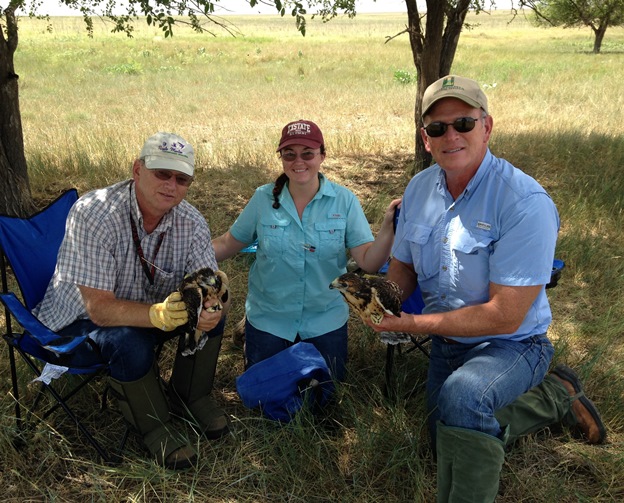
Texas Tech University doctoral student Katherine Watson, Pantex Wildlife Biologist Jim Ray (left), and Pantex Agronomist Monty Schoenhals (right), with two juvenile Swainson's hawks that are now wearing satellite transmitters for studying the species' interactions with wind turbines in North, Central and South America.
Pantex ASC Construction begins
Turner Construction, the construction arm of the Administrative Support Complex (ASC) development team, began site mobilization and early construction activities at the 50-acre ASC site. Turner Construction took advantage of the fall weather to mobilize work crews focused on clearing vegetation, installing perimeter fencing, erecting temporary trailers, and surveying for the building foundation and underground utilities. Construction crews are now focused on drilling for foundation piers and fabricating pier rebar cages and concrete pier placements.
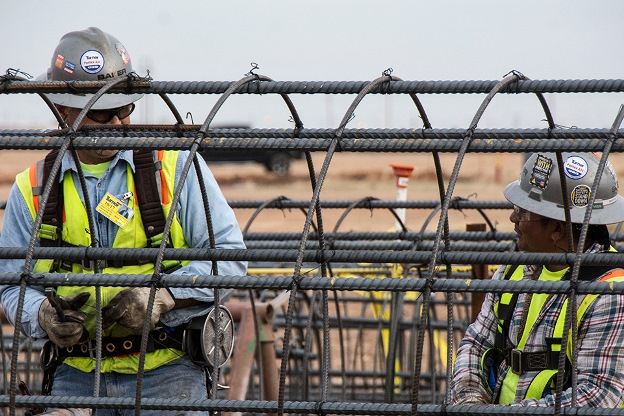
Construction crews have begun surveying the land and preparing for construction of Pantex’s Administrative Support Complex.
“It’s been amazing to see the site change every day,” said Chris Howard, CNS’s project manager for the ASC.
“Our Pantex management team is engaged with Lawler-Wood, the ASC development team lead, on a daily basis to ensure the facility will meet our tenant needs for a safe and secure environment to meet the NNSA mission,” said David Will, CNS’s program manager for the ASC.
To address the complexities and importance of the Pantex ASC, a management team is centering resources to ensure the project is successful. ASC construction activities will ramp up in the coming weeks to prepare site utilities while continuing concrete piers, footings, and grade beams to support the building’s large foundation.
Pantex hosts the UK at the High Explosives Workshop
Pantex recently had a British invasion, and it wasn’t the Beatles or the Rolling Stones but the United Kingdom Atomic Weapons Establishment (AWE), participating in the High Explosives Workshop.
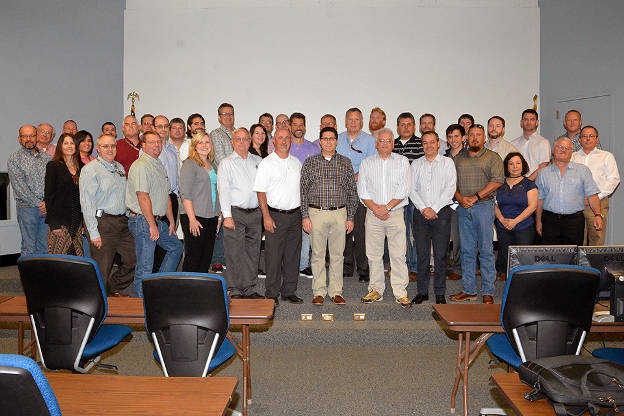
The United Kingdom Atomic Weapons Establishment and representatives from Los Alamos National Laboratory and Lawrence Livermore National Laboratory participated in the recent High Explosives Workshop hosted at Pantex.
This was the first UK/U.S. workshop hosted at Pantex. Although the two have interacted in the past, it was the first time the countries focused on high explosives. Representatives from Lawrence Livermore National Laboratory (LLNL) and Los Alamos National Laboratory (LANL) also attended the workshop.
"We have had interactions with Joint Working Groups with the UK, but these only slightly touched on explosive manufacturing," said Barry Hill, senior manager, High Explosive and Materials Testing. "Some joint working groups focused on manufacturing practices, not so much on explosives."
Past interactions have been on Joint Working Groups, or JOWOGs, covering topics such as energetic science and manufacturing practices, and have been greatly beneficial.
"Besides [JOWOGs] being technically beneficial for both the U.S. and UK high explosives community, it’s highly valuable in maintaining and growing the collaborative relationship between new and experienced scientist and engineers on both sides of this long-standing alliance," said Monty Cates, senior director, Explosive Technology Operations.
With a recently expanded treaty, more information regarding explosive manufacturing can be shared between the two countries. Sharing the W76 program and commissioning similar facilities means both sites are facing many of the same challenges. The workshop allowed for discussions about pressing, machining, additive manufacturing, the growing pains that come along with new facilities, and lessons learned along the way.
"This workshop was a great opportunity to collaborate and share practices to improve in safety process and efficiency," said Eddie Yarker, an AWE principal manufacturing engineer. "It was also a great way to gain a wider knowledge and how it is processed here (in the United States)."
Not only was the workshop a great experience between the U.S. and the UK, it was also a valuable learning opportunity for employees at other sites. New employees at LLNL who were not familiar with high-explosives production and Pantex in general were able to learn about some of the processes.
"We have a lot of new staff who aren’t familiar with Pantex or the other sites; we were able to bring some here and let them get an orientation of Pantex as well as the other sites," said Micha Gresshoff, a LANL engineer.
Gresshoff also said that being able to learn the broader mission and learn how production is performed at Pantex are valuable to their staff and their program.
The fruits of the workshop have been plentiful for the UK Atomic Weapons Establishment, according to Mick Parry, the AWE acting principal production manager of explosives, and the momentum gathered from the workshop has carried over to their site. "We have returned with lots of ideas for future improvements and collaborations between our two sites," Parry said.
Wild Pantex – A Bird and How it Relates to Native American Heritage Month, Pantex
Article by Jim Ray, Pantex Wildlife Biologist/Scientist
As part of November’s Native American Indian Heritage Month, it was a fitting tribute to consider the unique relationship that Native Americans had with a bird that Pantex works with quite extensively. Thanks to several eastern and, especially, southeastern tribes, the Purple Martin earns the distinction of being North America’s longest managed songbird. When European settlers arrived on our eastern shores, they found Native Americans hosting colonies of Purple Martins in their villages. The birds would nest each summer in hollowed-out gourds that the village inhabitants hung for them from cut saplings. They obviously appreciated the birds, whether it was for control of biting insects or those known to damage their crops or the drying meats and skins that hung about their villages. Perhaps another benefit was the warning provided by alarm calls that the birds tend to give when a predator or human stranger approaches.
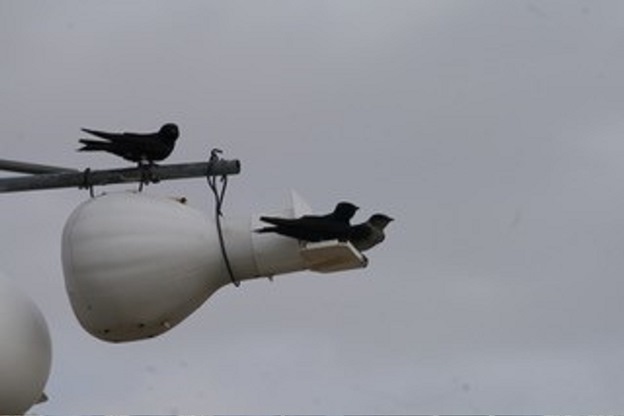
Human's continue to provide Eastern Purple Martins nesting cavities as they have for thousands of years.
It is not known for sure just how long this relationship existed, but it is estimated that the bottle or birdhouse gourd (Asian or African origin) arrived in what is now the eastern United States around 8,000 years ago. Regardless, the relationship propelled Purple Martins east of the Rocky Mountains to shift from natural cavities to that of multi-compartment birdhouses and hollow gourds for nesting. The only known exception, today, is a few pairs that nest in woodpecker cavities in a single stand of flooded palm trees in Florida.
So how does this relate to the United States Department of Energy/National Nuclear Security Administration’s Pantex Plant?
Within the spirit of Executive Order 13186, Responsibilities of Federal Agencies to Protect Migratory Birds, we have spent considerable time working towards the conservation of this declining migratory songbird through a multi-pronged approach. Specific projects involve a unique outreach program that resulted in the banding of over 10,000 Purple Martins among more than 40 colonies in Texas and Oklahoma. In 2013, Pantex expanded this work by collaborating in a partnership led by York University, the University of Manitoba, and the Purple Martin Conservation Association in studies of this bird’s ecology during the non-breeding season. Pantex purchases and deploys geolocator and G.P.S. data-loggers, thus providing a critical study site in the southwestern extremity of the range. Lastly, we have contributed technical guidance to a graduate-level class at Texas Tech University which analyzed data collected by citizen scientists across the range.
Among the benefits of the program; extensive media attention, presentations to bird watching, civic, and technical groups; as well as several publications on the bird, the program, and its results. Co-authored publications led by York University and the University of Manitoba on important stop-over and wintering sites used by Purple Martins are considered “breakthrough” and appearing in the most prestigious of scientific journals. An anticipated publication led by Texas Tech University will indicate the value of managed bird housing in contributing to the continued existence of the eastern Purple Martin.
Amidst all of this work, and myself being fortunate enough to host a colony of Purple Martins at my residence, I often wonder how many generations of humans have provided homes for these birds? As mind-boggling as it may seem, there may very well have been more generations involved in this bird’s management pre-European settlement, than afterwards. We are excited to be able to contribute to conservation of this storied songbird species.
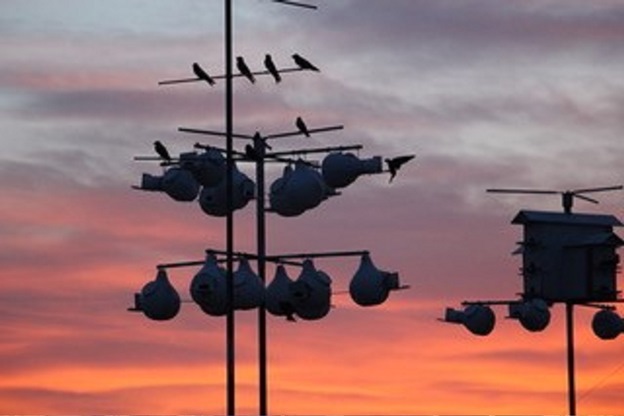
Pantex FD: Trained to respond to most anything
Most people wouldn’t know what to do when faced with a person trapped in a car — how to get them out, how to stabilize the vehicle — but the Pantex Fire Department trains annually on how to handle situations just like that. Recently, the department participated in the annual vehicle extrication training event.
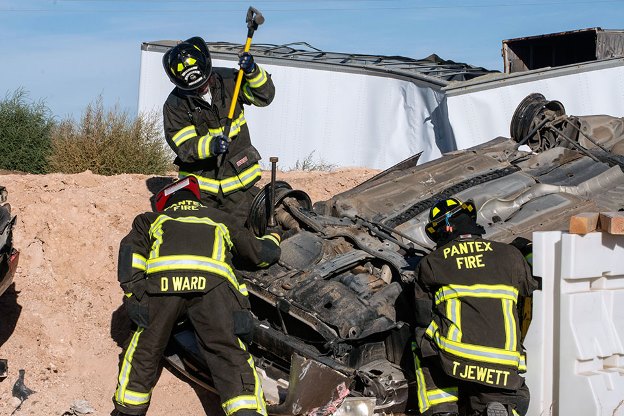
Pantex’s rescue team receives training for all scenarios and participates in one of their many yearly training events that focuses on vehicle extrication training, requiring members of the team to stabilize the vehicles and use different methods in order to perform the rescue.
“This is a great chance for the guys to try new ideas. Sometimes they have read about something or heard about a new technique and this is when we encourage them to put it to work,” said Captain Lee Foster, who also oversees the Pantex Fire Department’s Rescue Program.
The group refreshed their skills in the process of removing a vehicle from around a person who has been involved in a motor vehicle incident when conventional means of exit are impossible or would be considered unsafe.
“The Pantex Fire Department responds off plant to a variety of mutual aid emergency situations; car crashes are one of the major emergency responses we encounter,” said Bill Ho‑Gland, Pantex assistant fire chief. “Rescues often require delicate patient care and vehicle stabilization is needed to minimize additional injury to the victim during the extrication process.”
The training was in multiple revolutions, each requiring different set of skills and tools to perform a safe extraction. Not only can the team work on new ideas, but they are also being push to the limits. These scenarios are always made to have the team working in a worst‑case situation.
